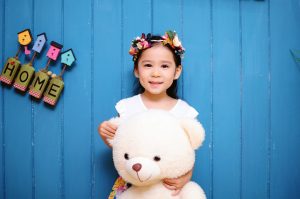Chapitre 4 – Les gens
Vocabulaire
Whether you are learning French because you want to travel, need it for work, or have signed up for a French course, learning languages is a great way to meet new people and gain new perspectives. In the “Vocabulaire” section of this Pressbook, you will learn useful vocabulary for more in-depth conversation describing people in detail. You will describe people’s physical appearance and their personality, what clothing items one is wearing including colours, talk about family and pets, and say what hobbies one likes to do.
Lexique
 Les noms et prénoms
Les noms et prénoms- La description (physique/personnalité)
- La famille
- Les couleurs
- Les animaux familiers
- Les loisirs: le sport, les activités, les spectacles, les sorties, les voyages
Les vêtements
Play the video to watch a fashion show. The video will pause every time there is a question. These questions are meant to challenge you to apply and learn new vocabulary. You may slow down the recording by using the gauge on the bottom right-hand side of the player. To enlarge the video, select the “fullscreen mode” button above the video, on the top right.
Quelle partie du visage?
Comment est-il / est-elle?
Comment est-il / est-elle?
When we describe people or things in French, it is important to make the adjective “agree” with the person or thing it is describing in gender (masculine or feminine) and number (singular and plural), so make sure you learn both forms of the adjective, the masculine and feminine forms.
Contrast:
Voici un petit garçon.

Voici une petite fille.

De quelle couleur sont ses cheveux?
De quelle couleur sont ses cheveux?
Les couleurs
“BANGS”
The acronym “BANGS,” that is Beauty (beau), Age (jeune), Newness (nouveau/vieux), Goodness (bon, mauvais) or Size (grand/petit, long), represent adjectives that are placed in front of the noun in French.

For example: Quelle belle journée! The adjective belle precedes the noun.
In contrast: C'est une journée ensoleillée. The adjective ensoleillée follows the noun.
Press “play” to listen to the recording of a list of the adjectives that precede the noun in the accordion below. Select the French expression in the accordion in order to view the English translation. Listen and repeat the French expressions out loud. Be sure to pause the recording and rewind when necessary.
Exercice
Let’s see how well we can remember the new adjectives.
Les animaux
La comparaison
A fashion show
Which part of the face?
What is he / she like?
What colour is his/her hair?
What a beautiful day!
It is a sunny day.

